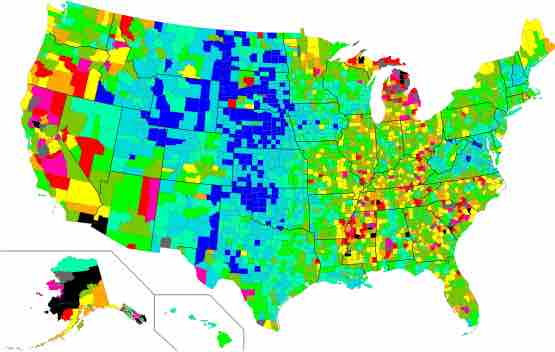Unemployment
Unemployment, also called joblessness, occurs when people are without work and are actively seeking employment. Unemployment is measured in order to determine the unemployment rate. The rate is a percentage that is calculated by dividing the number of unemployed individuals by the number of individuals currently employed in the labor force .

U.S. Unemployment Rate
This image shows the unemployment rates by county throughout the United States in 2008. The unemployment rate is the percentage of unemployment calculated by dividing the number of unemployed individuals by the number of individuals currently employed in the labor force.
Measurements
In order to find the rate of unemployment, four methods are used:
- Labor Force Sample Surveys: provide the most comprehensive results. Calculates unemployment by different categories such as race and gender. This method is the most internationally comparable.
- Official Estimates: combines information from the three other methods. The method is not the preferred method to use when calculating the rate of unemployment.
- Social Insurance Statistics: these statistics are calculated based on the number of individuals receiving unemployment benefits. The method is criticized because unemployment benefits can expire before an individual finds employment which makes the calculations inaccurate.
- Employment Office Statistics: only include a monthly total of unemployed individuals who enter unemployment offices. This method is the least effective for measuring unemployment.
Measurement Shortcomings
The measurement of unemployment is not an absolute calculation and is prone to errors. For example, the unemployment rate does not take into account individuals who are not actively seeking employment, such as individuals attending college or even individuals who are in U.S. prisons. Individuals who are self-employed, those who were forced to take early retirement, those with disability pensions who would like to work, and those who work part-time and seek full-time employment are not factored in to the unemployment rate. Some individuals also choose not to enter the labor force and these statistics are also not considered. By not including all underemployed or unemployed individuals in the measurement of the unemployment rate, the calculation does not provide an accurate assessment of how unemployment truly impacts society. Errors and biases are also present due to data assembly and reporting inconsistencies.